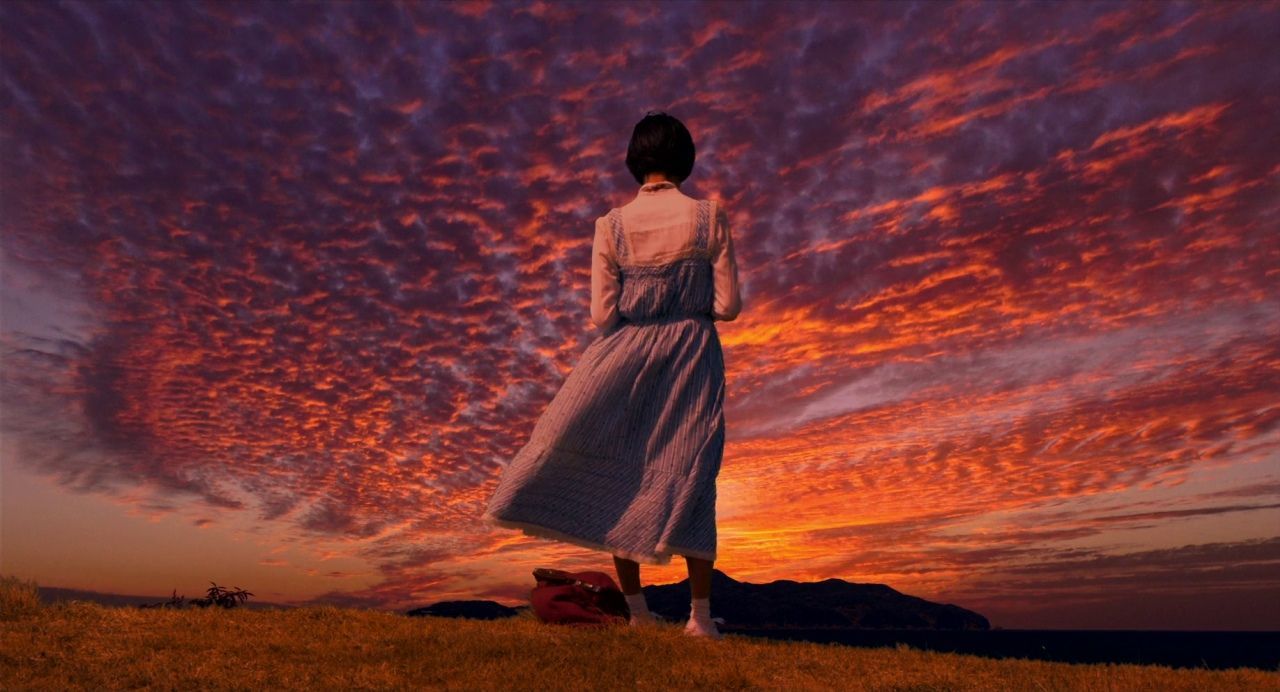Hanagatami (Obayashi Nobuhiko, 2017)

Obayashi Nobuhiko’s Hanagatami is the kind of maximalist masterpiece that simply has to been seen. A story about the lives of young people in a remote village in Japan in the months leading up to Pearl Harbor, it’s awash in the poetic dreams of youth, aswoon with love and death and poetry and moonlight. It’s unlike anything in contemporary cinema, the closest analogue in the English-speaking world is probably something like the early films of Guy Maddin, Archangel say, breathlessly romantic movies as much in love with the artifice of cinema as the young characters are alive to all the extremes of life.
Toshihiko is a young man who comes to live with his aunt in the coastal village. At school he meets the dashing and intense Ukai, a handsome and athletic man who swims in the ocean at night, and the decrepit and intense Kira, a creepy guy who wears ratty green robes and walks with a cane. Attracted to the positive qualities of both men, Ukai’s physical vigor and Kira’s indomitable will, Toshihiko befriends them both, along with a trio of young women: Kira’s quiet cousin Chitose, the daughter of the local restaurant owner Akine, and Toshihiko’s cousin Mina, who is dying of tuberculosis. Mina’s name is significant, as the film, though based on a 1937 novel by Kazuo Dan, is as much an adaptation of Dracula as anything else, with the war and its all-consuming ideology as the vampire sucking the blood out of Japan’s youth.
Obayashi packs the film with wild edits, eschewing traditional shot/reverse-shot in favor of a kind of shot/mirror-shot, where he swaps the positions of characters in a two shot and then cuts between them during dialogue. It’s an eerie effect, even more disorienting than his more obviously anti-realist choices: elaborate painted backgrounds, vibrant colors, old style composite shots and multiple exposures. Throughout, the film is scored operatically, ever-rising to a pitch of emotionality that can’t possibly resolve itself happily. The effect is overwhelming, as crushingly desperate as the lives of teenagers who know that before them lies nothing but their collective doom.
Obayashi is mostly known here as the director of the cult horror film Hausu, but the only other one of his films I’ve yet seen is 1986’s Bound for the Fields, the Mountains, and the Seacoast. I thought that film was crazy, but it isn’t half as audacious as Hanagatami. At 80 years old, Obayashi is still representing the best of what Japanese, and world, cinema has to offer.
